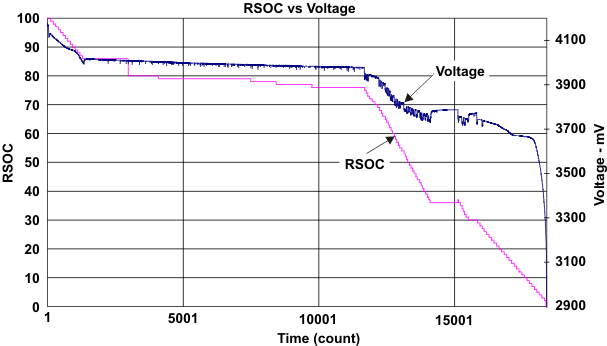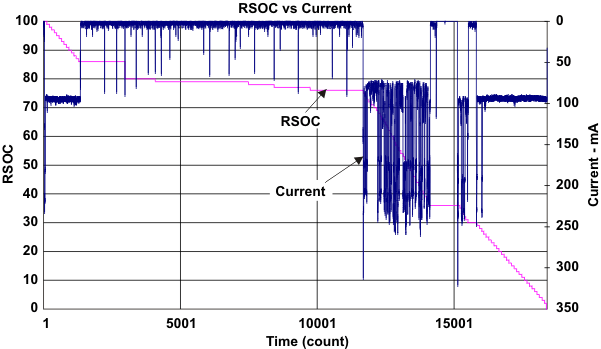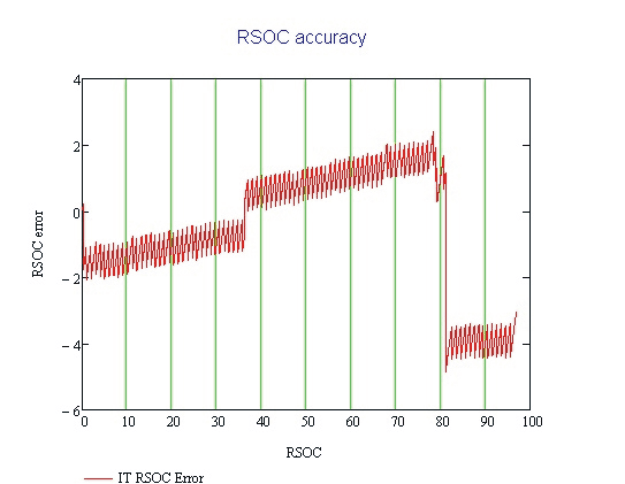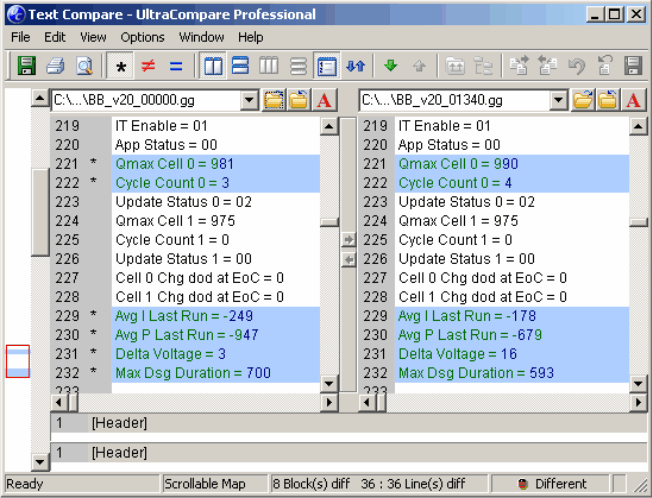SLUA450A January 2008 – November 2022 BQ27421-G1 , BQ27425-G2A , BQ27425-G2B , BQ27441-G1 , BQ27505-J2 , BQ27505-J3 , BQ27505-J4 , BQ27505-J5 , BQ27520-G4 , BQ27530-G1 , BQ27531-G1 , BQ27545-G1 , BQ27546-G1 , BQ27741-G1 , BQ40Z50 , BQ40Z50-R1 , BQ40Z50-R2
- Theory and Implementation of Impedance Track™ Battery Fuel-Gauging Algorithm in bq2750x Family
- Trademarks
- 1Summary of the Algorithm Operation
-
2Parameters Updated by the Gas Gauge in More Detail
- 2.1 Modes of Algorithm Operation
- 2.2 Update of Chemical Depth of Discharge (DOD)
- 2.3 Update of Qmax
- 2.4 Update of Resistance
- 2.5 Update of Temperature Model
- 2.6 Update of DataRAM.Remaining Capacity (RM) and DataRAM.Full Charge Capacity (FCC)
- 2.7 Update of DataRAM.Remaining Capacity( ) and DataRAM.State Of Charge( ) Values
- 3Real Application Example
- 4Revision History
3.1 GSM Smart Phone Application
Unlike notebook battery applications with a relatively constant load profile, cell phone/smart phone or PDA, depending on the actual communication protocol (GSM, CDMA, 3G GSM or 3G CDMA), has a pulsating load profile. Questions for this type of application are always related to how the Impedance Track™ can accurately predict the battery remaining capacity. What is the impact of the pulsating current? In this example, a GSM smart phone is used to check out the Impedance Track™ accuracy.
As previously mentioned, both the Qmax and Resistance can be updated only when certain criteria are met. Under a pulsating current, an accurate OCV reading may be difficult to achieve. A discussion of careful examination of these criteria follows.
First of all, it has to be made clear that zero current is NOT needed for an OCV reading. Only a LOW current (i.e., less than C/20 rate) is needed. This is common in cell phone/smart phone application when the phone is in standby mode. During the relaxation, a short spike current pulse will not wake-up the gauge from relaxation mode because the DF.Quit Relax Time = 1 by default. Current has to stay high longer than 1 second to exit the relaxation mode.
Secondly, if a single voltage read point was taken exactly at the moment of the spike, it is ignored because the IT checks if the current exceeded DF.Dsg Current Threshold. If it did, then the previous OCV reading is used. As shown in Figure 2-3, these reading are stored in RAM.
The GSM phone used in this testing is a registered phone. During testing, actual phone calls along with applications such as playing games, checking emails, as well as standby mode, are used. The battery voltage and the discharge current are logged with time stamp. The reported RSOC by IT is also logged.
As shown in Figure 3-2, the current reported by IT is being averaged by both a analog-to-digital converter (ADC) in the device as well as by IT algorithm. Although the GSM phone is running on GSM protocol* but the reported peak current is around 200 mA to 300 mA when the phone’s LCD screen is on and only around 80 mA when the screen is off.
*GSM waveform: 1A for 0.48ms and 72mA for 4.76ms
 Figure 3-1 GSM Smart Phone: Relative State of Charge (RSOC) vs Battery Voltage
Figure 3-1 GSM Smart Phone: Relative State of Charge (RSOC) vs Battery Voltage Figure 3-2 GSM Smart Phone: Relative State of Charge (RSOC) vs Discharge Current
Figure 3-2 GSM Smart Phone: Relative State of Charge (RSOC) vs Discharge CurrentThe RSOC accuracy for this particular test then is calculated from the data log file and Figure 3-3 shows the RSOC accuracy during the whole discharge cycle. As the discharge starts, the error is around 4% but as the phone goes into standby mode, which is around RSOC = 85%, the accurate OCV reading is taken by IT regardless of the high-current spikes (with delay). From RSOC = 80% down to RSOC = 0%, the accuracy is within 2%.
 Figure 3-3 GSM Smart Phone: RSOC Accuracy
Figure 3-3 GSM Smart Phone: RSOC AccuracyThis test has proved that the IT algorithm works as expected even for a pulsating load profile. The high-current spike does not affect the IT accuracy.
After comparing the original data flash contents against the final data flash contents (see Figure 3-4), it is clearly shown that Qmax has been updated during the real application test. It has proven that the gauge can meet the Qmax update conditions to complete Qmax update as well as RSOC update.
 Figure 3-4 Flash Data Log Shown Qmax Has Been Updated
Figure 3-4 Flash Data Log Shown Qmax Has Been Updated